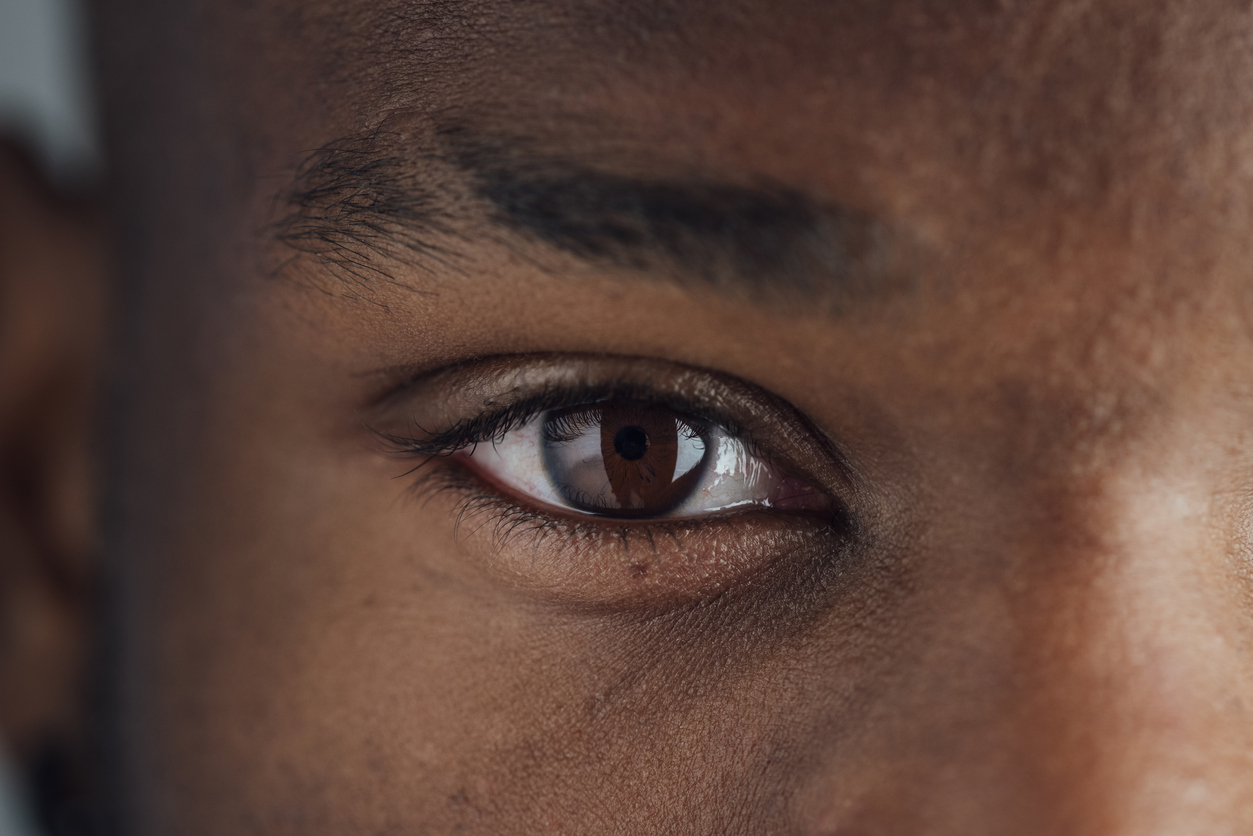Eyelid surgery (blepharoplasty) is a cosmetic procedure aimed at rejuvenating the appearance of the eyes by addressing issues like sagging eyelids, excess skin, and puffiness. Dr. Guida offers this surgical procedure to enhance the aesthetic appeal and functionality of the eyelids, leading to a more youthful and refreshed look. For upper eyelid surgery in NYC, Dr. Guida will establish a tailored plan to achieve your goals.
What Is Upper Eyelid Surgery (Blepharoplasty)?
Blepharoplasty, commonly known as eyelid surgery or eyelid lift, is a surgical procedure that rejuvenates the appearance of the eyelids. It involves the removal of excess skin, muscle, or fat from the eyelids to address issues like sagging, puffiness, and fine lines. The goal of blepharoplasty is to create a more youthful and refreshed look while potentially improving vision in cases where sagging eyelids obstruct the line of sight.

What Does Upper Eyelid Surgery Treat?
- Sagging upper eyelids
- Excess skin on eyelids
- Impaired vision due to eyelid issues
- Fine lines and wrinkles around the eyes
- Hooded or “tired” eye appearance
- Uneven or asymmetrical eyelids
- Discomfort caused by eyelid skin rubbing against the eyes
When Is Upper Eyelid Surgery Needed?
The delicate skin and muscles around our eyes undergo various changes as we age. One of the most common age-related issues is the gradual loss of skin elasticity. Over time, the skin on the upper and lower eyelids can become loose and droop, creating a tired appearance. This drooping not only affects one’s aesthetic appeal but can also impede vision in severe cases, making simple tasks like reading or driving more challenging.
The weakening of eyelid muscles may cause the eyelids to sag and lose their natural contour. Upper eyelid surgery in NYC, also known as an upper eyelid lift, can correct these cumulative effects of aging on the eyelids to restore a more youthful and refreshed appearance and improve vision. Another significant change that occurs with age is the accumulation of fat deposits in the eyelid area. These fat deposits can result in puffiness and bags under the eyes, contributing to a worn-out look. Dr. Guida addresses these issues with lower eyelid surgery.
What Does Blepharoplasty For The Upper Eyelids Entail?
Upper eyelid surgery is specifically focused on rejuvenating the upper eyelids. This procedure typically involves removing excess skin, muscle, or fat from the upper eyelids to address issues like sagging, drooping, or hooded eyelids. By restoring a more youthful and open-eyed appearance, upper eyelid surgery in NYC can enhance your overall facial aesthetics and may also improve vision in cases where overhanging eyelid skin obstructs the field of view.
During upper eyelid surgery, Dr. Guida first numbs the area with local anesthesia. He makes a discreet incision along the natural crease of your upper eyelid. Then, excess skin, muscle, and fat are carefully removed or repositioned. The incision is closed with fine sutures, resulting in minimal scarring. The procedure typically takes about an hour. Recovery involves some swelling and bruising, but these effects subside within a few weeks.

What Is Lower Blepharoplasty?
Lower blepharoplasty, or lower eyelid surgery, targets under-eye bags, puffiness, and sagging skin to create a smoother, more youthful look. The procedure involves removing or repositioning fat and tightening the skin beneath the eyes. Many patients choose to combine lower blepharoplasty with upper eyelid surgery for a more balanced and refreshed overall appearance. To learn more about the benefits, techniques, and recovery process, visit our detailed Lower Eyelid Surgery page.

Michele's Testimonial
Eyelid Surgery with Dr. Robert Guida in NYC
Dr. Robert A. Guida stands as a highly accomplished facial plastic and reconstructive surgeon, boasting an impressive career spanning more than three decades. His specialized skills encompass a wide spectrum of procedures including cosmetic and functional nose surgery, sinus surgery, face and neck lifts, and cosmetic eyelid surgery, among others. As a double board-certified surgeon Dr. Guida holds the esteemed position of Clinical Associate Professor at the Weill Cornell School of Medicine. Throughout his career, he has garnered praise for consistently achieving outstanding outcomes, making a lasting impact in the field of facial surgery in NYC.
Reach out to us to schedule your consulation.
Patient Testimonials
Blepharoplasty (Eyelid Surgery) FAQs
What is the best age for upper eyelid surgery?
While there is no specific age requirement, most individuals considering blepharoplasty are in their 40s or older when age-related changes in the eyelids become more pronounced.
Is blepharoplasty only for cosmetic purposes?
No, blepharoplasty can serve both cosmetic and functional purposes. While many choose it to improve the appearance of their eyelids, it can also address vision impairment caused by sagging upper eyelids.
What is the recovery time for blepharoplasty?
Recovery time for upper eyelid surgery in NYC can vary but typically involves some bruising and swelling for a few weeks. Most people can return to normal activities within 7 to 10 days, but strenuous workouts should be avoided for several weeks. The full results may take several months to become apparent.
Are the results of blepharoplasty permanent?
While the results of blepharoplasty are long-lasting, the natural aging process continues. Over time, some age-related changes may recur, but you can maintain a more youthful appearance than if you hadn’t undergone the procedure.
How do you qualify for upper eyelid surgery?
You may qualify if sagging eyelids impair vision or create a tired appearance. Candidates should be in good health, have realistic expectations, and may need a visual field test to prove functional impairment for medically necessary procedures.
Does insurance cover upper eyelid surgery?
Insurance may cover upper eyelid surgery if it’s deemed medically necessary, typically due to vision obstruction. Documentation like a visual field test and photos is required. Cosmetic-only procedures are considered elective and are not usually covered by insurance.
How many years does upper eyelid surgery last?
Results from upper eyelid surgery generally last 5 to 10 years. Aging continues, so some drooping may return over time. However, most patients enjoy long-lasting improvements in eyelid appearance and peripheral vision if surgery was medically indicated.
Who is not a good candidate for eyelid surgery?
Poor candidates include individuals with uncontrolled medical conditions, dry eye, bleeding disorders, or unrealistic expectations. Smoking and certain eye diseases can also increase risk. A consultation helps determine if surgery is safe and likely to be effective.
Is Upper Eyelid Surgery painful?
Upper eyelid surgery is not usually painful. Local anesthesia is used, and discomfort afterward is minimal and manageable with over-the-counter pain relievers. Swelling and bruising are common but typically resolve within one to two weeks post-surgery.
How long until I see results?
Initial results appear within 1 to 2 weeks as swelling subsides. Final results may take several weeks to fully develop. Scars fade over time, and most patients notice a refreshed, more youthful look within the first month.
Can I combine Upper Eyelid Surgery with other procedures?
Yes, upper eyelid surgery is often combined with lower eyelid surgery, brow lifts, or facial rejuvenation treatments. Combining procedures can enhance overall results and reduce total recovery time, but it should be tailored to your health and goals.

Why Choose Us For Eyelid Surgery in NYC?
Dr. Robert Guida is a double board-certified facial plastic and reconstructive surgeon known for consistently delivering natural and remarkable results using the latest, most innovative surgical techniques. With over a decade of full-time academic medicine experience at Weill Cornell Medical College, he has the skills, instincts, and experience to deliver stunning results. If you’re seeking upper eyelid surgery in NYC, consult Dr. Guida today.